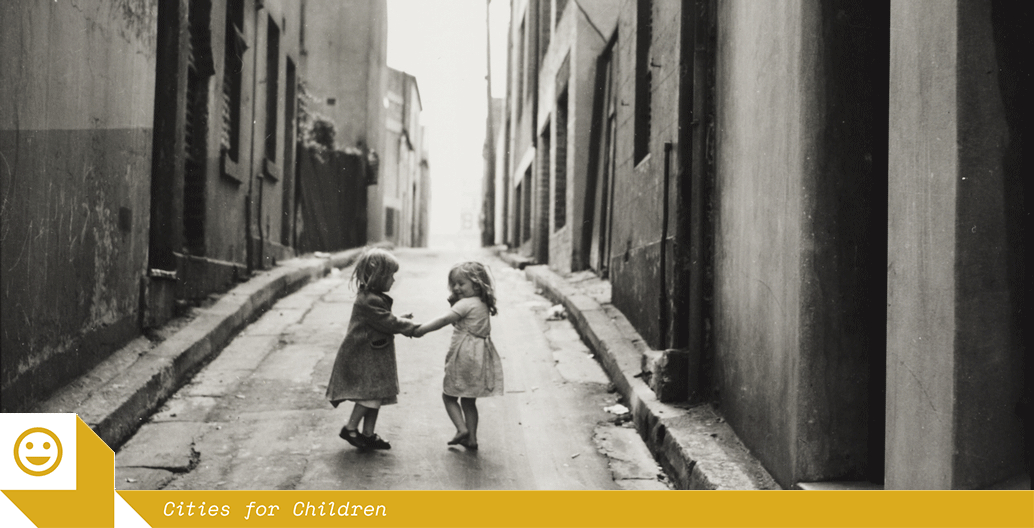
The birth of the larrikin: Melbourne’s colonial children
To understand any society, the category of age is just as important as class, ethnicity or gender, writes urban historian Simon Sleight. His book on the public realm in colonial Melbourne reveals how children carved out their inimitable space within what was then one of the world’s richest cities.
During its early years the colony of Victoria was far more youthful than it is today. While the 2016 census in Victoria identified 18.3 per cent of the population between the ages of 0-14, in 1871, this comparative figure was 42.2 per cent: a statistic reflecting the influence of a baby boom in the wake of the 1850s’ gold rush. As the nineteenth century progressed, adult commentators became acutely aware of the presence of such a high ratio of young people in their midst and began to debate how best to meet the challenge. Frequently they lapsed into despondency, viewing the young colonists as a burden, not a blessing.
“The ‘colonist boy’ is regarded as quite an enfant terrible, and the ‘colonial girl’ is painted in colours the reverse of flattering. No class among the young Caucasian natives is exempted from the sweeping censure in which the critics are now indulging. The bedouins of the streets are simply irreformable miscreants … The youth of a higher class are nobler-drinking, tobacco-smoking, casino-loiterers, who presume the pretensions of gentlemen without possessing a single quality that the gentleman would deem desirable. The girls are demonstrative dolls, whose mental powers are exhausted in their efforts to bedizen themselves in imitation of the pictures in the fashion-books …”
– The Australasian (1870).
Yet despite all this, the writer concluded, ‘the accusation is not true’. Whilst a proportion of the population was identified as manifesting the ill-effects of ‘deficient parental training’, ‘the mass of young colonists [bade] fair to become steady and intelligent members of society’.
Cut to a few years later and The Australasian might have been less inclined to moderation. It was during the 1870s that the fear of ‘larrikins’, or young street rowdies, spread through popular consciousness and concern began to centre on the question of whether young Melburnians would prove worthy of their inheritance. It is during this period too that ‘youth culture’ becomes identifiable, a phenomenon the colony’s youthful population fuels. Within this context, Victorian youth for the first time achieved numerical prominence at the expense of those born overseas.
This prominence, it must be stressed, occurred because of Indigenous Australian dispossession. In the 1840s, Indigenous children camped with their parents along the Yarra River, but by the early 1850s the children of the Wurundjeri group had for the most part been pushed out of what was now central Melbourne, living at first in a number of camps on the outskirts of the city grid before being confined to remote mission stations including Coranderrk, some 75 kilometres east of the capital. As imagined, discussed and experienced in Melbourne, ‘Young Australia’ was a profoundly white phenomenon, forged out of Indigenous dispossession and an uneasy coexistence with Chinese gold-seekers.
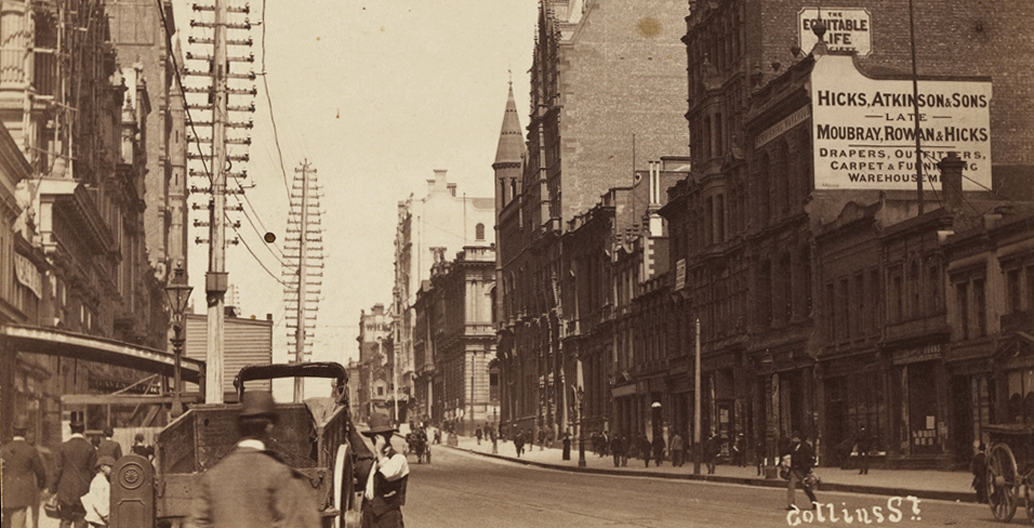
View of Collins St looking west from no. 336, near Elizabeth St (1890). Image: SLV.

Group of children in Erskine Place, North Melbourne. Image: SLV.
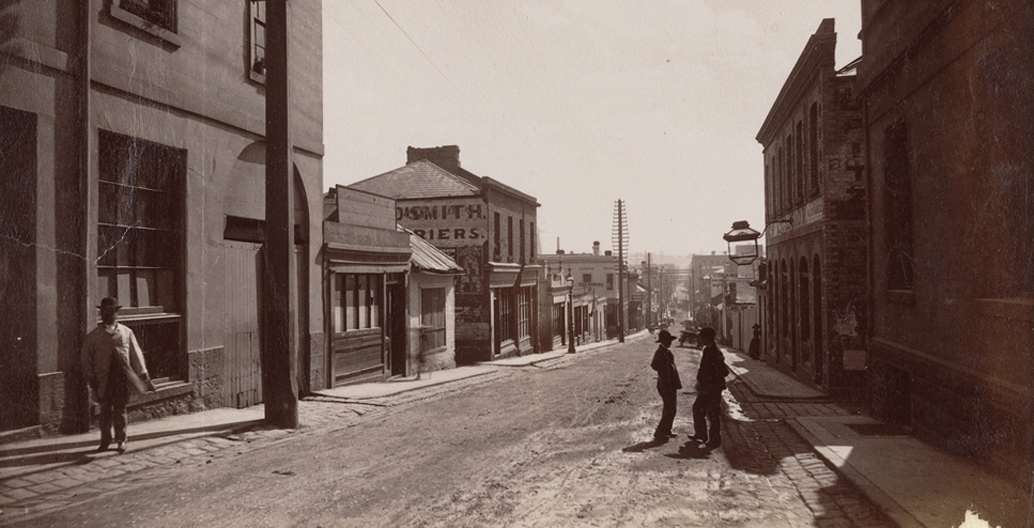
Little Bourke St. looking east (1874). Image: SLV.

Entrance to a slum pocket in Carlton, Melbourne. Image: State Library of Victoria.
‘Places for children’ and ‘children’s places’
In considering the interrelationship between a place regarded as youthful, the young people rapidly acquiring such attention within it, and a contemporaneous discourse of youth, I focus on the outdoor city. I contend that it is all too common for historians, guided by coherent bodies of institutional evidence, to re-imagine young people trapped indoors in past times in spaces providing few avenues for agency.
Recognizing educationalist Kim Rasmussen’s important observation that ‘places for children’ are only seldom the same as ‘children’s places’ my book moves outside and takes to the streets for its inspiration. Like one of the speakers at the Child Welfare Exhibit held in Chicago in 1911, I am not satisfied with a definition of the street – and by extension public space – as ‘a merely physical factor in our midst’, rather:
The street is the real commons and it is psychic. By it every home is extended and all homes meet … Look at it from the point of view of physical danger, and it is one of the most potent arguments for life insurance; look at it with the hopeful eyes of youth, and it is ‘Youth’s Happy Hunting Ground’.
With its distinctive population structure, fast development and sense of newness, turn-of-the-century Melbourne provides a prime location to explore this ‘hunting ground’: to examine, in other words, the interface between young people and the urban outdoors. As one of the world’s largest cities in this period, Melbourne represents a case study in ‘explosive colonisation’ – a supercharged metropolis. Understanding the ways in which young people shaped emergent Melbourne through attempting to impress upon the city their own desires has implications not only for the way in which histories of this particular place are written, I argue, but for the manner in which scholars approach the presence of youth in other urban contexts.
The social production of space
Since the publication of Lefebvre’s La Production de L’espace (translated as The Production of Space in 1991), space is no longer generally regarded within the academy as an empty tabula rasa or a purely geometrical form. Instead, space is often considered to be socially produced and to play an important part in the construction of identity. This link with identity is significant.
In historiographical terms, it meant that an interest in the spatiality of everyday life, further emphasised in the mid-1980s by Michel Foucault soon became entangled with second-wave feminism – a fruitful engagement spawning the publication of trailblazing texts including Mary Ryan’s Women in Public: Between Banners and Ballots, 1825–1880 (1990) and The Sphinx in the City: Urban Life, the Control of Disorder, and Women by Elizabeth Wilson (1991).
These works identified the sexual ‘asymmetry’ of historical cities, the strategies that were used to justify the male domination of the public realm and the ways in which women were able to contest the status quo. Gender analysis of this order allowed the urban environment to be viewed from the perspectives of the disempowered and for the city to be seen in vivid terms as a mosaic of gendered territories, locations produced by the powerful, maintained by regulation and convention, and yet simultaneously remade in the course of tactical transgressions.
Scholars interested in issues of sexuality and race further broadened the scope of spatial interpretation from the mid-1990s. George Chauncey’s Gay New York: Gender, Urban Culture and the Making of the Gay Male World, 1890–1940 (1994) revealed the hitherto hidden history of Manhattan’s ‘sexual topography’ and its production by gay men. The author discussed the ways in which his subjects were able to build a sense of community in the face of overt hostility from other city users and the authorities, who viewed themselves as moral police tasked with the duty of upholding normative ‘heterosexist’ practices. Importantly, Chauncey argued that it was not essential for gay men to organise politically in order to defy oppression. Instead, systems of subcultural codes and strategies of everyday resistance allowed a subtle form of bricolage to be played, a game often sufficiently sophisticated to remain undetected by outsiders.
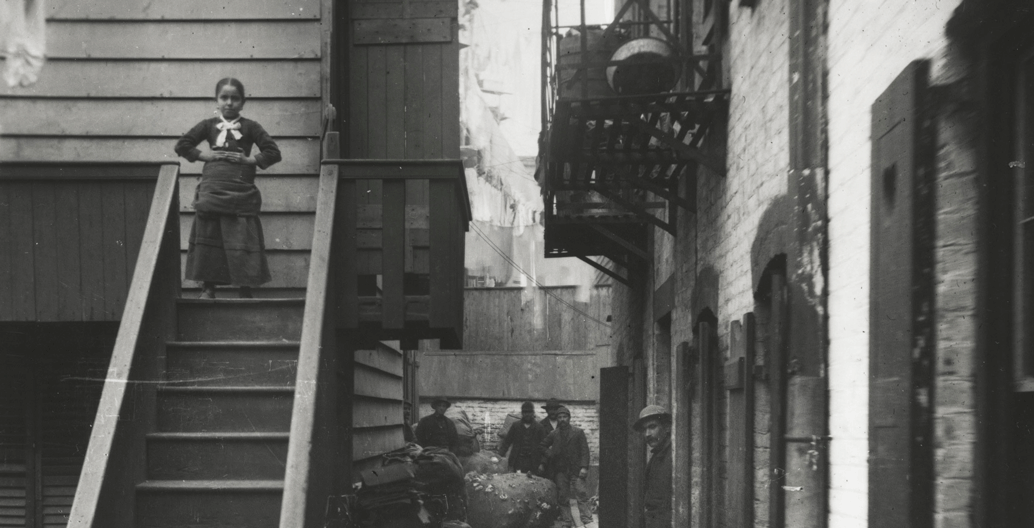
The urban history of cities bear the strategies that were used to justify the male domination of the public realm.
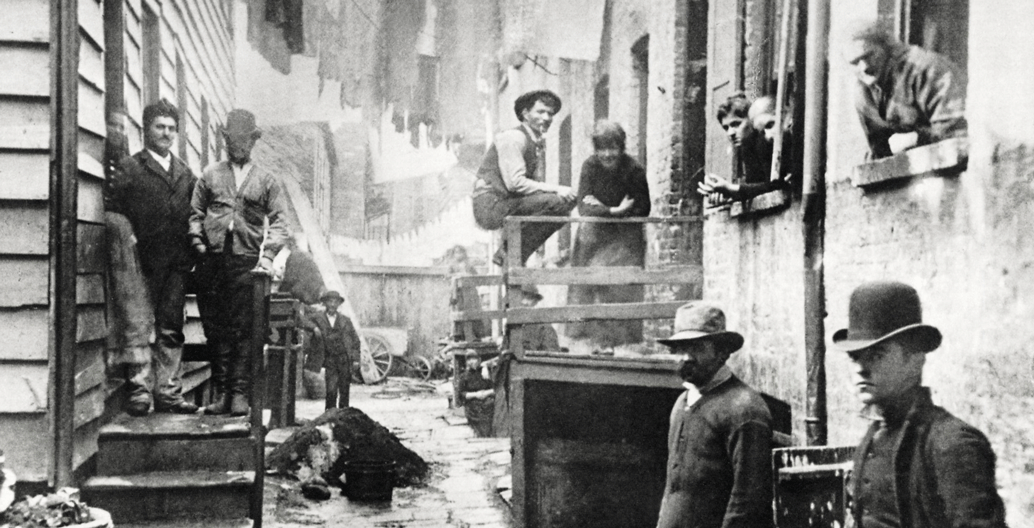
Systems of subcultural codes and strategies of everyday resistance allowed a subtle form of bricolage to be played.
Operating with very different terms of reference to Chauncey, Denis Byrne and Maria Nugent in Mapping Attachment: A Spatial Approach to Aboriginal Post-Contact Heritage (2004) nonetheless also draw attention to the importance of space for social action. They show how Indigenous Australians in post-contact New South Wales continued to live their lives through the landscape despite the upheaval caused by the arrival of white settlers. As well as utilising resources such as lakes and estuaries that did not fall within a new framework of private ownership, local Indigenous peoples maintained their spiritual investments in the spaces around them, spaces theoretically ceded to the newcomers but in practice still of active importance to the Indigenous community. Interviews and in-the-field research undertaken by the Byrne and Nugent further revealed the ‘geo-biographies’ of specific individuals, the access routes maintained by community members down to the present, and the use of memory and stories to mentally chart contested terrain. If childhood can be seen similarly – and following American author Michael Chabon – as ‘a branch of cartography’, with mental maps of pathways and destinations endlessly embellished through experience, Mapping Attachment offers one methodological starting point for writing histories alert to geography.
These pioneering works serve as theoretical ballast for my spatial explorations of nineteenth and twentieth century Melbourne. George Chauncey’s analysis, for instance, of how the ‘gay city’ could function ‘in the midst of, yet often invisible to, the dominant city’ has influenced my conceptualisation of the use of metropolitan space by young people. In similar fashion, Byrne and Nugent’s contention that heritage workers should think in terms of landscapes rather than discrete sites has helped reaffirm my decision at the outset not to focus too narrowly on particular locations. Though early Melbourne’s young people attempted to make specific places their own, my studies show that their activities were not confined to isolated islands of urban space but instead extended across the whole city – a large shared domain over which they roamed and within which they played, worked and established senses of self.
Sometimes their intentions for the city clashed directly with those of other city users; at other times young people’s activities within the public realm passed largely unnoticed. Street games and street trading, for instance might provoke angry reactions from inconvenienced citizens or instead be regarded with tolerance and treated as intrinsic, even valuable, facets of city life.
Metropolitan police files, personal reminiscences, and the detailed correspondence of Edmund FitzGibbon and John Clayton, Melbourne’s long-serving town clerks, are among the sources that help reconstruct a lively outdoor urban scene. Extraordinary forgotten stories abound, such as when the Victorian Parliament attempted to shut the city to children in 1900.
Young Melburnians engaged in all manner of outdoor pursuits at this time, ranging from opportunistic service provision to the semi-legal collection and sale of discarded items. As the century progressed, questions began to be asked ever more often about whether young people’s street work was for good or ill. It is here that the appearance of a well-known Australian urban type, the ‘larrikin’ or street tough, fits in. The identification and labelling of the larrikin from 1870 represented a fundamental challenge to contemporary understandings of public order and age-related behavior, for a society in which the concept of a transitional phase of ‘adolescence’ had yet to coalesce.
The intimate relationship between larrikin activities and the city spaces in which they occurred is often skimmed over, thus missing the link between Melbourne’s developing urban frame and the disorderly youths who made specific urban locations their own. Focusing on elements of the larrikin’s unsanctioned public activities among other aspects of youthful experience, my book assesses the larrikin’s distinct repertoire through the lenses of age, space and gender. The impact of larrikinism on ‘Young Australia’ is an important one, and includes the attempted literary recuperation of this intrinsically public figure.
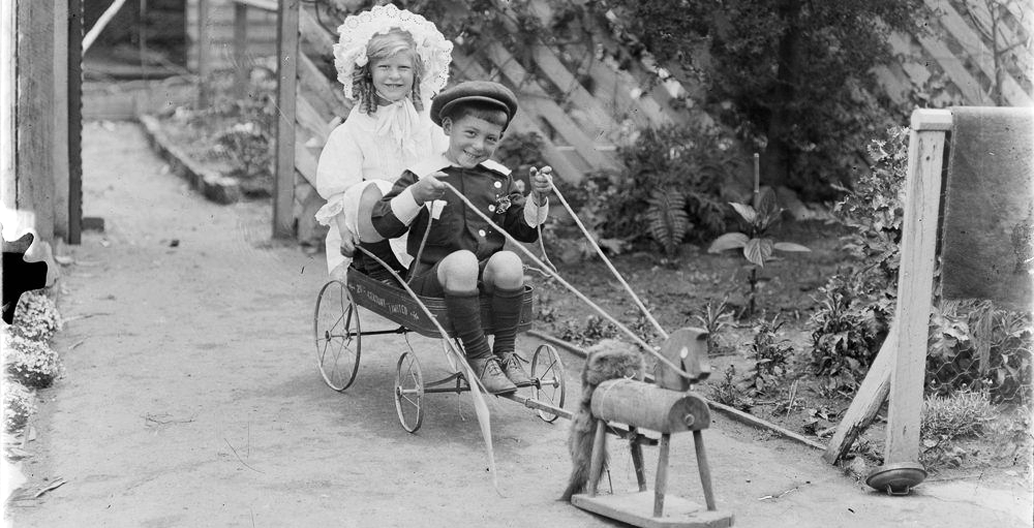
Children with cart and horse (1900). Image: SLV.
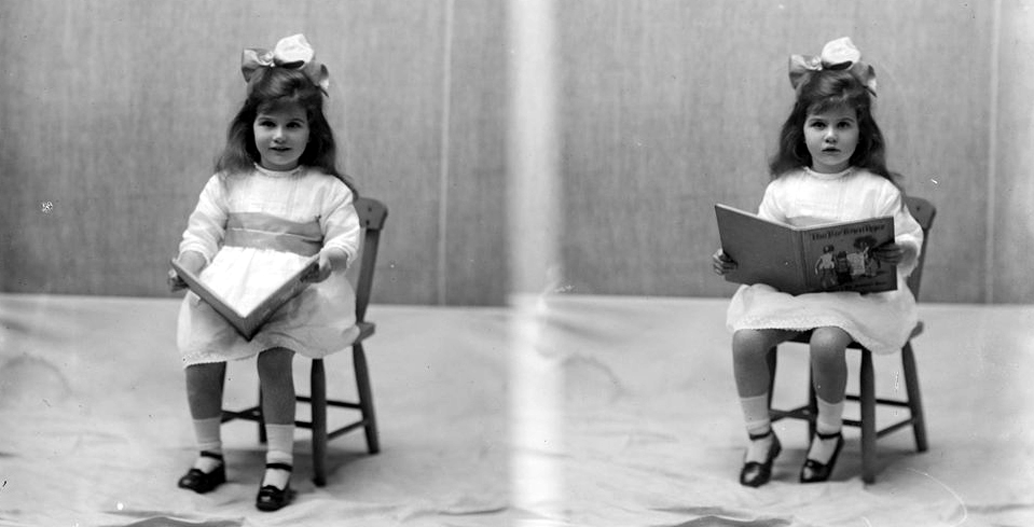
Miss Judith Elcoate (1918). Image: SLV.
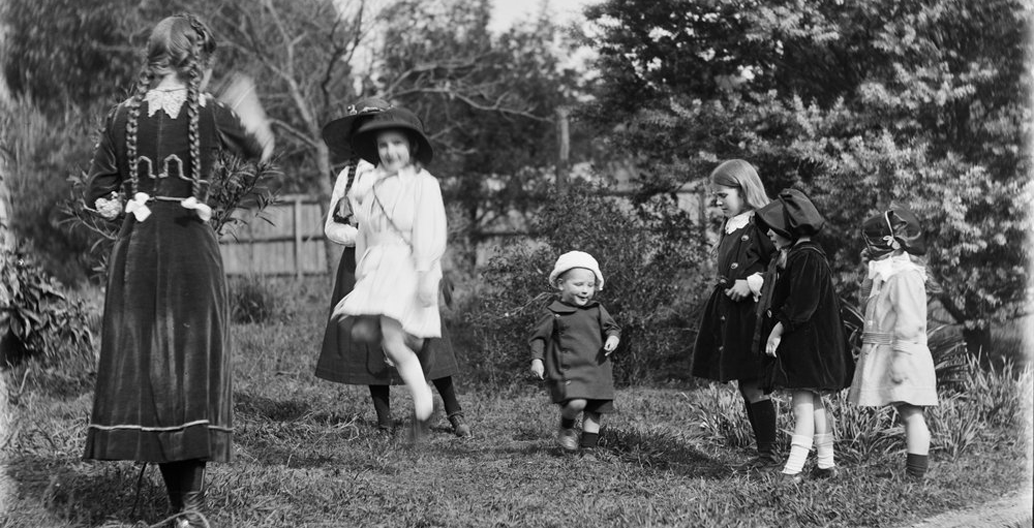
Jump rope by Ruth Hollick (1910). Image: SLV.
Searching for the echoes of Victoria’s nineteenth-century children
Historians are guided by sources. Even if as adults ‘we are all exiles from childhood’ this does not alas equate with limitless supplies of archival material from which to mine information on upbringings, especially in the case of the working classes. The voice of vanished youth, heard from beneath a pile of old newspapers or government records, really is a treasured moment; more commonly researchers listen out for echoes and follow footsteps. In this pursuit, the historian of youth must read across a daunting range of evidence to catching glimpses of young people, often filtered through adult perceptions. There is no easy solution to this difficulty.
Autobiographical accounts of childhood and similar ‘ego documents’, as a case in point, cannot provide a panacea, for they are coloured by the forces of nostalgia and often in addition present only narrow viewpoints. Such accounts are relatively common and rich in detail, yet memoirs recounting childhood experiences suffer the disadvantages of distance from the upbringings they narrate and a bias towards recording middleclass experience. Transcripts of oral testimony are by contrast scarce for the period examined, relating only to the very final years of the nineteenth century onwards, and, of course, to the questions asked in interview.
Diaries kept by young people in Melbourne in this era are also rare objects, and often – but not always – lacking in the depth of description needed for a thorough analysis. Circumspect handling and careful consideration of provenance is essential with each of these types of evidence. Nevertheless, personal narratives are particularly valuable in revealing the connection between memory and setting and in helping to test the impact of societal forces upon individual agency. Such sources ‘show how individuals strategise and act, not alone, but rather always embedded in social relations, in institutions, and in history’.
Interestingly, while the overwhelming majority of correspondents’ concerns in the 1860s relate to the stressed fabric of the city (with a plethora of letters about floods, dirt and the state of the streets), from the 1870s onwards there is a marked increase in the number of citizens writing to complain about each other. Among these many thousands of items are many hundred pertaining to the activities of the gold rush baby boomers and, in turn, their offspring. Thus we find weary adults protesting about noisy youngsters disturbing the peace, shopkeepers casting aspersions about the behaviour of young newsboys and flower girls, and the heads of charities seeking permission to parade young people through the streets en route to the annual picnic.

Children in Little Oxford Street, Collingwood. Image: SLV.
![Carlton [Kitchen interior with woman and three children]. Image: SLV](https://www.foreground.com.au/app/uploads/2017/06/download-1.png)
Carlton [Kitchen interior with woman and three children]. Image: SLV

Collingwood open air wash-house. Image: SLV.

No. 12 Hood Street Collingwood. Image: SLV.
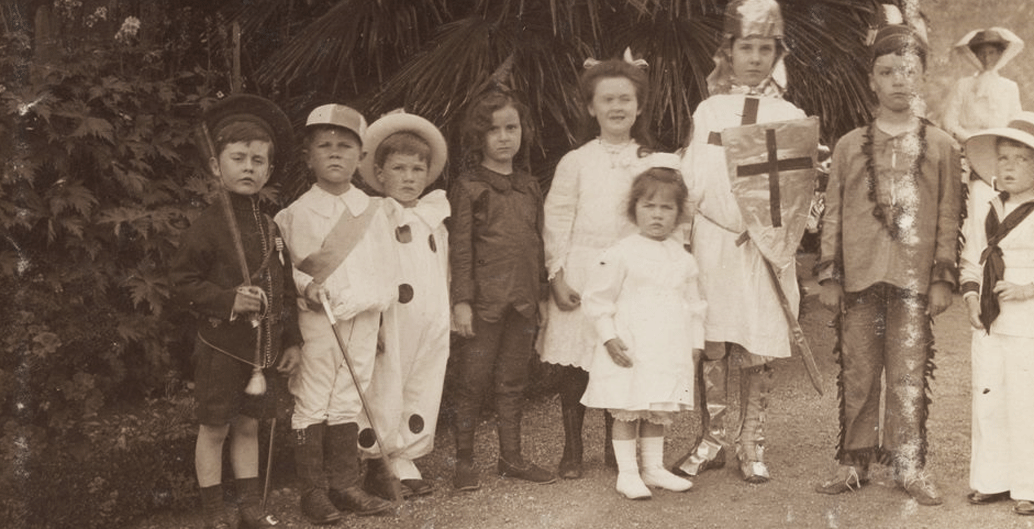
Childrens party at Macedon (1914). Image: SLV.
Another rich resource facilitating the socio-cultural and spatial approach taken in my studies is the body of extant photographs from the era. Collections of these images offer windows to another world, windows framed by their original makers and coloured by their subsequent histories, yet luminous nonetheless.
Whether photographed as part of institutional procedure or included in depictions of streetscapes by accident, Melbourne’s young people were both positioned and self-presenting in front of camera. Victor Burgin contends that photographic subjects are situated in an ‘unending process of becoming’, a suggestion with special relevance to photographs of young people, arrested momentarily in their pursuit of growing up, and in this instance living in a place such as Melbourne, itself seen as youthful. Photographs of young Melburnians help to show the range of childhoods those children knew, the undertakings in which they engaged and the circumstances in which they might find themselves. And here on film, captured by the camera’s steady gaze, are traces of personality and agency that often belie the photographer’s purpose and haul us, as viewers, into the picture.
Like the young city-dwellers who form the subjects of my book, I try to live in the historical moment, whilst also employing the historian’s prerogatives for hindsight and an awareness of the longue durée. Stepping out into Melbourne’s spaces in my research and analysis, I have identified what I term the historical ‘youthscape’: an overlapping, underlying and competing layer of city life produced by young people, often in opposition to adult intentions for the city. This youthscape is there to be seen in Melbourne’s rich civic archive, a treasure trove of information revealing the efforts of young Melbournians to construct their own adventure playground in the Carlton Gardens in the summer of 1896, for instance, or the distances youth travelled across the city. Subject to change through time – as well as according to season, time of day, day of the week – and crosscut by factors of comparative age, gender and ethnicity, Melbourne’s youthscape offers insights into young lives lived through place, and glimpses of latent futures. And despite the diminishing realm for youthful autonomy in the contemporary city, look hard enough and the youthscape can still be discerned: in the laneways filled with street art, for example, or in the evening hangout at Tivoli Arcade on Melbourne’s Bourke Street. Young people continue to write their designs on urban space, paralleling my resolve to write them into urban history.
––
This text is an edited excerpt from Young People and the Shaping of Public Space in Melbourne, 1870–1914, Simon Sleight 2013, published by Routledge.
Dr Simon Sleight is a Senior Lecturer of Australian History at King’s College, London, having earlier held the position of Rydon Fellow with the Menzies Centre for Australian Studies, also at King’s. His doctoral research on young people and urban space was conducted at Monash University. Dr Sleight’s Monash PhD went on to win the Australian Historical Association’s biennial Serle Award for best doctoral thesis in Australian history submitted in 2008–09. Before this, Simon enjoyed all the benefits of a state education in his native Lincolnshire, UK.


